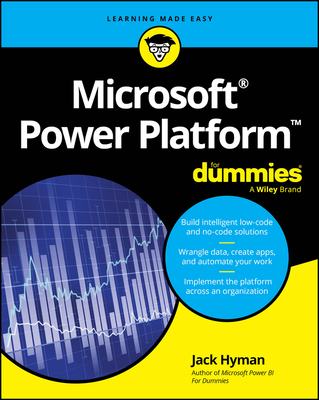Object-Oriented Programming in C# Training in Woodbury
|
We offer private customized training for groups of 3 or more attendees.
|
||
Course Description |
||
| This thorough and comprehensive course is a practical introduction to programming in C#, utilizing the services provided by .NET. This course emphasizes the C# language. It is current to Visual Studio 2019, .NET Framework 4.7.2 and C# 8.0. Important newer features such as dynamic data type, named and optional arguments, the use of variance in generic interfaces, asynchronous programming keywords, tuples, and nullable reference types are covered in a final chapter. Supplements cover Visual Studio 2019, the fundamentals of Language Integrated Query (LINQ), and unsafe code and pointers.
Course Length: 5 Days
Course Tuition: $1750 (US) |
||
Prerequisites |
|
| The student should have programming e xperience in a high-level language. | |
Course Outline |
|
1. Introduction to NET
2. First C# Programs
3. Data Types in C#
4. Operators and Expressions
5. Control Structures
6. Object-Oriented Programming
7. Classes
8. More about Types
9. Methods, Properties and Operators
10. Characters and Strings
11. Arrays and Indexers
12. Inheritance
13. Virtual Methods and Polymorphism
14. Formatting and Conversion
15. Exceptions
16. Interfaces
17. .NET Interfaces and Collections
18. Delegates and Events
19. Introduction to Windows Forms
20. Newer Features in C#
Appendix A. Learning Resources Electronic File SupplementsSupplement 1. Using Visual Studio 2019
Supplement 2. Language Integrated Query (LINQ)
Supplement 3. Unsafe Code and Pointers in C#
|
Course Directory [training on all levels]
- .NET Classes
- Agile/Scrum Classes
- AI Classes
- Ajax Classes
- Android and iPhone Programming Classes
- Blaze Advisor Classes
- C Programming Classes
- C# Programming Classes
- C++ Programming Classes
- Cisco Classes
- Cloud Classes
- CompTIA Classes
- Crystal Reports Classes
- Design Patterns Classes
- DevOps Classes
- Foundations of Web Design & Web Authoring Classes
- Git, Jira, Wicket, Gradle, Tableau Classes
- IBM Classes
- Java Programming Classes
- JBoss Administration Classes
- JUnit, TDD, CPTC, Web Penetration Classes
- Linux Unix Classes
- Machine Learning Classes
- Microsoft Classes
- Microsoft Development Classes
- Microsoft SQL Server Classes
- Microsoft Team Foundation Server Classes
- Microsoft Windows Server Classes
- Oracle, MySQL, Cassandra, Hadoop Database Classes
- Perl Programming Classes
- Python Programming Classes
- Ruby Programming Classes
- Security Classes
- SharePoint Classes
- SOA Classes
- Tcl, Awk, Bash, Shell Classes
- UML Classes
- VMWare Classes
- Web Development Classes
- Web Services Classes
- Weblogic Administration Classes
- XML Classes
- Object-Oriented Programming in C# Rev. 6.1
15 September, 2025 - 19 September, 2025 - VMware vSphere 8.0 Skill Up
27 October, 2025 - 31 October, 2025 - RED HAT ENTERPRISE LINUX SYSTEMS ADMIN II
8 December, 2025 - 11 December, 2025 - Linux Fundaments GL120
22 September, 2025 - 26 September, 2025 - Introduction to Spring 6, Spring Boot 3, and Spring REST
15 December, 2025 - 19 December, 2025 - See our complete public course listing
C# Programming Uses & Stats
|
Difficulty
|
Popularity
|
Year Created 2000 |
|
Pros
In Demand:
C# along with Java is one of the top languages in demand for employers.
.Net Library:
C# is integrated with the .Net Library thereby providing access to a vast archive of functionality and support.
Team Friendly:
Multiple developers can easily work together on a project.
Compiled Language:
The code that is stored on a public-facing server is in binary form. In other words, if your server gets hacked, the hacker doesn't automatically have access to your source code.
Transferable:
C# roots are derived from C which means that the structure is transferable to other languages like Java, Objective C, PHP and C++.
|
Cons
Steep Learning Curve:
Windows Application Exclusively:
Any .NET application needs a Windows platform to execute which means that companies using Linux servers would need Windows hosting to run a .Net application.
Lack of Support for Older .NET:
Many enterprise organizations keep older operating systems because of the many problems that an upgrade can bring to the platform. Microsoft stops supporting older .NET frameworks after a few operating systems upgrades.
|
| C# Programming Job Market |

Average Salary
|

Job Count
|

Top Job Locations
New York City |
|
Complimentary Skills to have along with C# Programming
Since the .NET development ecosystem spans a wide array of capabilities and tools, it is difficult for .NET developers to know which .NET development skills and training to pursue in order to increase their marketability — and earning potential. For that reason, learning supplemental languages such as Java, JavaScript, Python, C/C++, and others is expected in today’s competitive skill-set driven playing field. |





![iPhone 15 Guide for Seniors: Easy-to-Follow Learning for Older Adults with Step-by-Step Instructions and Visual Aids [II EDITION]](/bookim/9781915331922.jpg)
